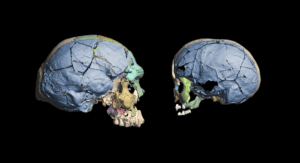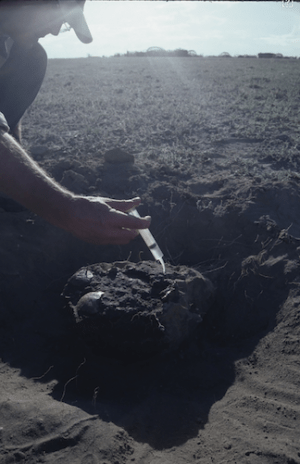
PROCEEDINGS OF THE NATIONAL ACADEMY OF SCIENCES—Researchers report* that brain shape differences between fossil and modern humans are likely due to facial evolution rather than brain evolution. Although brain sizes of Homo sapiens from 160,000 years ago in Herto, Ethiopia are similar to that of modern humans, the shape of the brain cavity differs, suggesting further evolution of the brain or shape change related to evolution of the face. Tim White, Christoph Zollikofer, and colleagues conducted endocranial scans on 125 modern humans, including children, and reconstructed the crania of 50 fossil Homo individuals, including children, comprising Homo erectus, Homo neanderthalensis, and H. sapiens. The samples of fossil H. sapiens were found at Herto, Ethiopia and the Qafzeh and Skuhl caves in Israel. Because brain growth ceases with the eruption of the first permanent molars but facial structure continues to grow until adulthood, the authors compared endocranial shapes in immature and adult specimens. Throughout brain growth, endocranial shapes were similar between fossil and modern children, and differences in endocranial shape developed with continued growth of facial structure. According to the authors, the results suggest that the differences in endocranial shapes between fossil and modern humans were not due to brain evolution but likely due to dietary and lifestyle differences that influenced facial bone structure.
________________________________

Digital restoration of the skulls of fossil Homo sapiens from Herto, Ethiopia, dated to 160,000 years ago (left: adult individual; right: 6-7-year-old child). Virtual fillings of their braincases (blue) permit inferences on brain shape development and evolution. Tim White, Christopher Zollikofer, and Marcia Ponce de Leon
________________________________

Extraction of the in situ adult cranium from Pleistocene sandstone at the Herto Bouri locality required the application of preservative to hold its fragile bones together. Tim White, Christopher Zollikofer, and Marcia Ponce de Leon
________________________________
Article Source: PNAS news release.
*“Endocranial ontogeny and evolution in early Homo sapiens: The evidence from Herto, Ethiopia,” by Christoph P.E. Zollikofer et al., Proceedings of the National Academy of Sciences, 1-Aug-2022. https://www.pnas.org/cgi/doi/10.1073/pnas.2123553119
________________________________
Advertisement




